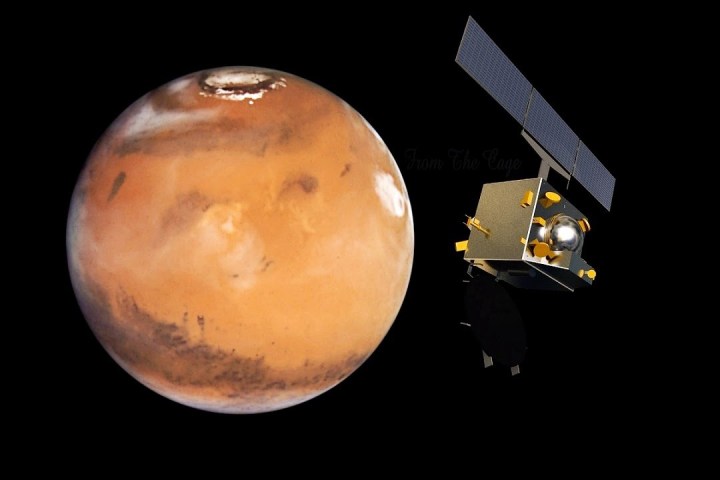Nearly a decade after its launch in 2013, India’s Mars Orbiter Mission has run out of fuel and will cease operations. The mission, which was the first Mars mission by an Asian country, demonstrated a different approach to planetary science by being built and launched on a much smaller budget than is typical for Mars missions from larger space agencies like NASA or the European Space Agency.
In an update shared this week, the Indian Space Research Organisation (ISRO) hailed the achievements of the mission, writing that, “despite being designed for a life-span of six months as a technology demonstrator, the Mars Orbiter Mission has lived for about eight years in the Martian orbit with a gamut of significant scientific results on Mars as well as on the Solar corona, before losing communication with the ground station, as a result of a long eclipse in April 2022.”

In discussions at an ISRO national meeting, scientists there declared that the mission will now have run out of propellant and so it would no longer be possible to orient the spacecraft. “It was declared that the spacecraft is non-recoverable, and attained its end-of-life,” ISRO wrote. “The mission will be ever-regarded as a remarkable technological and scientific feat in the history of planetary exploration.”
The mission was launched for just $73 million, which is extremely cheap for a Mars mission, even an orbiter. It is generally cheaper to design and launch an orbiter than a rover or lander, but even Mars orbiter mission budgets are typically in the range of hundreds of millions.
ISRO was able to launch its low-cost mission by reducing testing, simplifying design, and taking a modular approach to the hardware. There were also long working days expected of the scientists and engineers, and a focus on scheduling to prevent costly delays, according to an interview with Forbes by Koppillil Radhakrishnan, chairman of the ISRO who oversaw the mission development.
Some of the mission’s scientific achievements include uncovering information about the composition of the martian atmosphere, as well as learning more about potential causes of the atmospheric escape through which Mars is losing its atmosphere over time. The mission was also able to take images of the entire face of Mars due to its elliptical orbit, which at times took it far away from the planet’s surface. However, one of the mission’s big aims, to understand more about methane in the Mars atmosphere, was missed because a methane sensor on board the spacecraft didn’t work.
Even so, the mission has been unquestionably groundbreaking, and there are already plans for a follow-up mission, Mars Orbiter Mission 2, planned to be launched in 2024.
Editors' Recommendations
- Final communications sent to the beloved Ingenuity Mars helicopter
- Odysseus lander mission expected to end early due to power issue
- NASA says goodbye to Mars helicopter Ingenuity after an incredible 72 flights
- NASA has lost communication with the Ingenuity Mars helicopter
- See the passing of a day on Mars with the Curiosity rover




